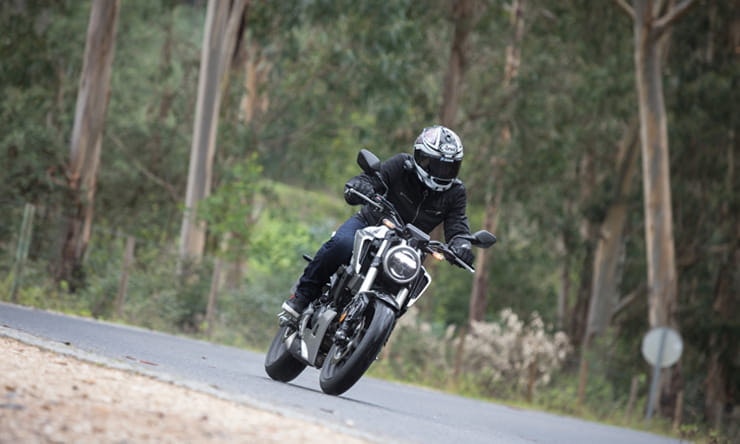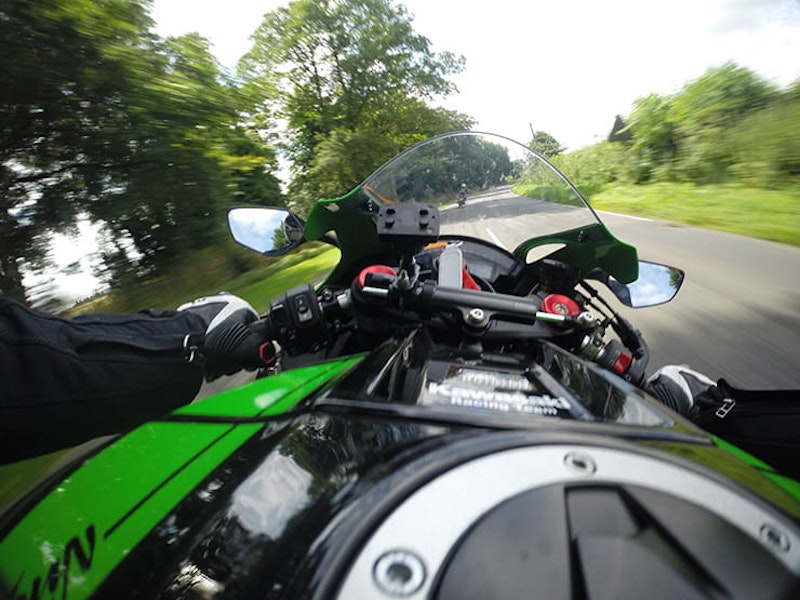New rider skills: How to corner on a motorcycle?
By Steve Rose
BikeSocial Publisher
27.04.2018
Cornering | Lesson one
Cornering on a motorcycle is as about as exciting as life gets. Imagine the best fairground ride of your life but after you have pressed the big, red ‘Turbo – do not press’ button - that’s about it.
For now though let’s just get round the first one. There are four main phases; approach, assess, steer and exit.
Approach
When you see the corner approaching, brake to a sensible speed – slower than you think you need to. Change down the gearbox to where the engine is working in the middle of the rev range.
Assess
Try to look ahead of you into and around the corner. Keep your head up, try not to stare just in front of your wheel. Looking far ahead lets you see further around the corner, check for potholes or manhole covers and see any unfolding incidents (car coming the other way on your side of the road maybe?) in plenty of time.
Steer
As you approach the corner, counter steer by giving the inside handlebar (right bar for a right hand bend, left bar for a left hander) a gentle nudge. See how confident that feels? If you find yourself running wide or cutting the corner, lift your head and look at the exit of the turn. Motorbikes tend to go exactly where you look, which is why it’s important to look a long way ahead, so your eyes pick out the perfect route.
Don’t grip the bars too hard – the more relaxed you are, the easier the bike steers.
Exit
As you pass the tightest part of the bend (the apex), give a little nudge to the outside handlebar at the same time as you open the throttle slightly. These two things will lift the bike upright again. Well done.
Lesson two
When motorcycles are upright you can ride over potholes, manhole covers, wet leaves, spilt diesel or snow and ice with impunity.
Try this while leaning over and you’ll soon be needing a lift and a recovery truck. Spotting hazards is essential because steering round one from 300 feet away is a lot easier than when it’s under your nose.
Some riders manage this by giving themselves a running commentary as they ride. Telling themselves what they can see at any moment.
Spotting a hazard in time makes it easy to shift your gaze to the safe path around it. Spotting a hazard six-feet away brings target fixation and sour-faced relatives saying ‘We told you it was dangerous.’.
None of this matters in a car because cars don’t fall over. But on a bike it’s essential.
Lesson three
Now you can steer and spot the hazards, the next question is ‘when to turn?’ Too early and you’ll cross the white line into oncoming traffic, too late and you won’t make the corner.
As you approach the turn move to the part of the road that gives the most visibility. For a left hand bend that means moving towards the right side of your lane – which lets you see round the corner sooner than staying left. For right hand turns move to the left side of the road about a foot from the kerb.
You can do this on a bike because you are so narrow. Cars can’t do this because they are as wide as the lane they drive in.
Approaching a right hand corner, position yourself on the left side of the road and slow to a sensible speed Change down a f gear or two and look ahead. There’s a point in the distance where the two kerbs converge. This is called the ‘limit point’ (because it is the limit of your vision) When you can see the two kerbs start to move apart, it means the corner is opening out. Now is the time to start turning.
This gives two advantages. You can see what’s coming around the corner before you commit to the turn and are much less likely now to cut the corner and run into the path of the oncoming traffic you hadn’t seen in the first place.
Motorcycle cornering for beginners
How to corner on a motorcycle
There are so many variables in any corner, from their angle, to the condition of the road and many other potential dangers but, get the basics right and you can apply them in all situations.

